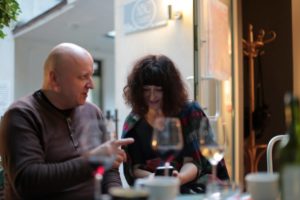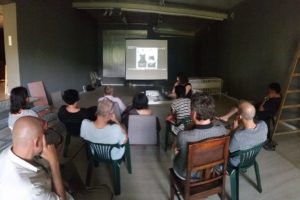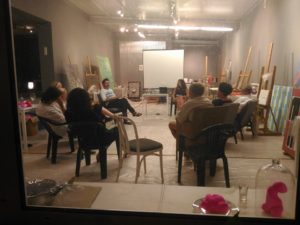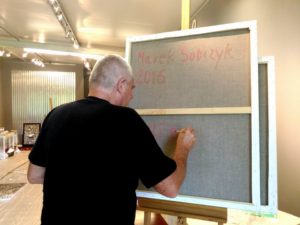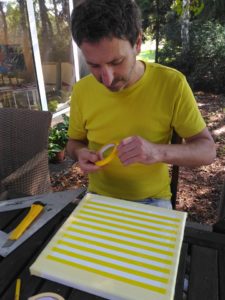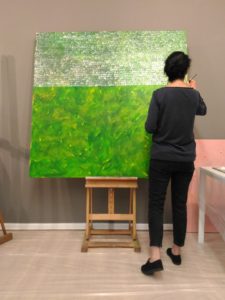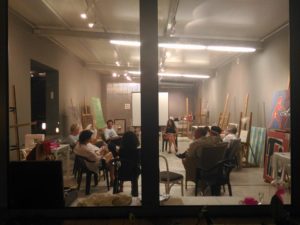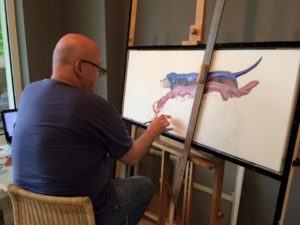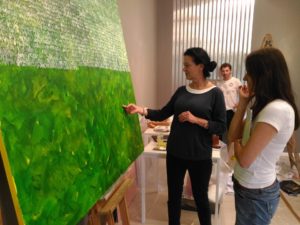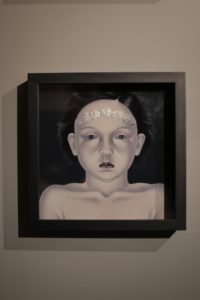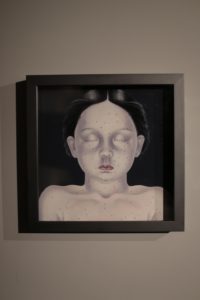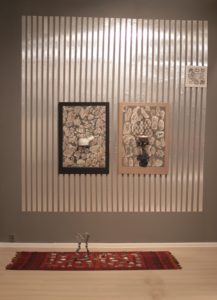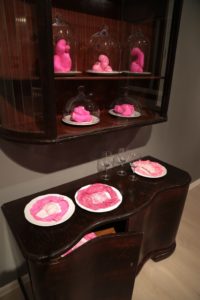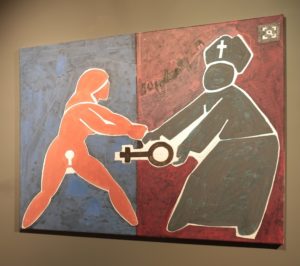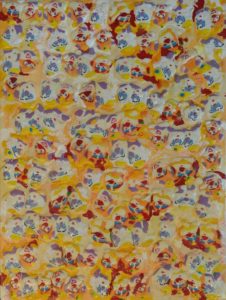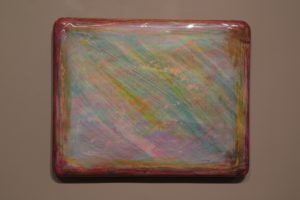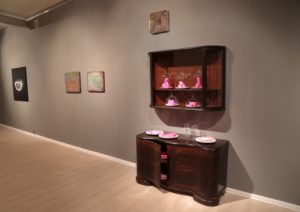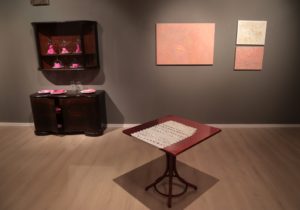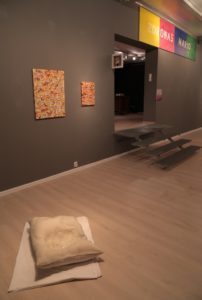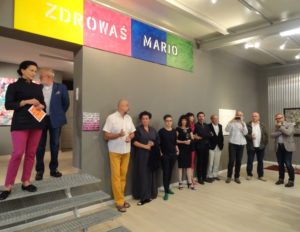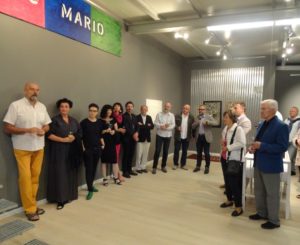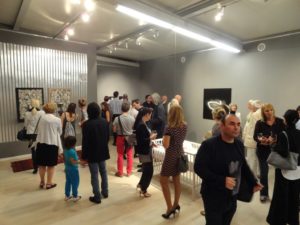SUMMER JAM 2016

- Marta Antoniak, Academy of Fine, Krakow
- Bogusław Bachorczyk, Academy of Fine, Krakow
- Andrzej Bednarczyk, Academy of Fine, Krakow
- Beata Ewa Białecka, Gdansk
- Iwona Demko, Academy of Fine, Krakow
- Katarzyna Jankowiak-Gumna, ABC Gallery, Poznan (symposium curator)
- Piotr Korzeniowski, Academy of Fine, Krakow
- Anna Królikiewicz, Academy of Fine, Gdansk
- Natalia LL, Wroclaw
- Wojciech Leder, Academy of Fine , Łodz
- Paweł Susid, Academy of Fine, Warsaw
- Marek Sobczyk, Warsaw
- Sławomir Toman, Faculty of the Arts UMCS, Lublin
Lectures and presentations:
- dr Maja Brzozowska-Brywczyńska , UAM, Poznan
- prof. dr hab.Izabela Gustowska, UAP, Poznan
- dr Małgorzata Jankowska, UMK, Torun
- prof. dr hab. Marek Krajewski, UAM, Poznan
- dr hab. Marta Smolińska, UAP, Poznan (debate moderator)
- Zofia Starikiewicz, CK Zamek
“Sweet”
Sweet is suspicious.
I invite you to the Summer Jam in Poznań where (as in the entire region of Wielkopolska), “sweet” is traditionally served after dinner. It is not called dessert or cake, but plain sweet. It tops a meal, a cherry atop a gateau, a sweet temptation. Both a delightful and sinful land of confectionary excess. Satiation.
Excess. Coated with icing, dripping with syrup, oversweet. Sticky sweet.
Teeth rot because of too much sweet.
Sweet eyes, a sweet smile, sweet lips, sweet words. They are as refined as they are toxic, hide something subcutaneous, subversive and hazardous.
Sweetness provokes nausea.
Sweet baby, sweet toddler, sweet boyo, and sweet girlie. Sweet innocence, purity, and naivete. The doubtful sweetness of childhood.
La Dolce Vita.
Sweet puppy, catty, bunny. Fluffy, soft to the touch, cute.
Sweetness provokes asphyxiation.
Sweetish smell of decaying leaves in autumn, of carrion – the sweetness of eternal repose.
Sweetish smell of blood – life is sweet.
Sweet is perverse.
Katarzyna Jankowiak-Gumna
ABC Gallery, Poznań, 03.2016
“Sweet, Sweet… Oversweet?!”
This year’s edition of the Summer Jam Symposium, held under the motto “Sweet”, examines the subversive nature and ambiguity of this otherwise innocuous epithet. There can be sweet children, candy, dreams, and love and at the same time sweet little lies, secrets or the eyes of a person who wants to lead us astray. We automatically extend our hands and want to hug sweet toddlers, animals and mascots… We want to hold the “sweeties” up close. As the lyrics of a song by the Polish band Golec uOrkiestra goes, “seeing sweet, I go mad, and my eyes are never sad”. In popular culture we can find a TV series Sama słodycz [Absolute sweetness] with Piotr Adamczyk in the lead role, where a single father, a writer, takes care of his nine-year-old son, whom he had not seen in years, and where we see a gradual construction of a sweet, if incomplete, family. Sweet father, sweet son – how sweet they are in their duo.
Stereotypically, we associate all the hues of pink with sweetness; it is best if pink accompanies lush and round forms. Then, all is so sweet! We all know sweet pics, or sweet selfies. “In a sweet pic the background is immaterial. What really matters is the face, the pursing of the lips, the grimace, and the make-up. Or else a new phone cover reflected in the mirror.”[1] The pictures should be taken from an extended hand and then you can be sure that an avalanche of likes on FB will follow. It will be so sweet, sweeter and oversweet! The topos of a sweet girl is laboriously perpetuated in the lyrics of disco polo songs. The Alfa Boys band sing about falling in love with a sweet girl called a sweetie.[2] A model in the video purses her lips, as if she were non-stop posing for a sweet pic.
In turn, sociologists today are at their wits’ end, trying to establish if junior high school students are all sweet sixteens or rather a national scare.[3] The future will show; as we all know, excessive sweetness is the surest way to get nauseated.
Nausea may be induced even by sheer beauty.[4] In the context of excess of what is desirable, Immanuel Kant stressed that pure sweetness is the most abhorrent thing of all.[5] In the long run, excess sweetness is unbearable, triggering a unique kind of nausea, namely born of boredom and fatigue after too much sweet food or sex.[6] Excess sweetness confuses us, connoting excess bliss and satiation. As Winfried Menninghaus, a renowned scholar dealing with these phenomena observes, precisely the paradigm of abhorrence born of excess is always very closely linked to bliss. Abhorrence born of excess fills the place of bliss itself, a trace of excess[7] – for instance gorging on sweets or revelling in all kinds of broadly construed sweetness. As a result, we get nauseated…
In turn, according to Jean-Paul Sartre[8], nausea is conducive to the observer’s self-perception and genuine experience of reality; this observation still holds today.[9] The French existentialist, like Friedrich Nietzsche, sees it as a distinguishing mark of the selected initiated few, and a spark of abhorrence is seen as an event with a capacity for revelation.[10] Nausea, then, has a tremendous critical potential, as it can be acquired and mastered and apply as a form of cognition[11] to come to terms with one’s freedom and try to “use” it for something, irrespective of the time when you live and of the kind of sweets eaten. Perhaps, then, this critical potential is especially topical today, in the postmodern era, given to the consumer culture and the tyranny of possibility, while excess sweetness attacks us from any possible direction?
How can the “sweet” metaphor be translated into the visual arts? How to build tension between an appetite for and an attraction of sweet things on the one hand, and excess and nausea on the other? Or perhaps nausea is inseparable from sweetness? In 1997, Zuzanna Janin applied cotton candy on a wire life-size skeleton, creating her self-portrait and calling it Sweet Girl (Zuzanna). In this work, a sweet girl, like the ideal of a cat-girl from the Alfa Boys song, in time becomes a skeleton, in this way creating a contemporary version of the vanitas. We can say that we once again shift from sweetness to nausea, which is conducive to self-perception.
Kant suggested avoiding pure sweetness, which is invariably abhorrent; we can add here that it results in diabetes, one of the developmental diseases, characteristic of our time. Aesthetic diabetes – allow me to propose a new term in this area – results in kitsch, which is sweet by nature. How can we then apply “sweetness” in arts in a manner preventing excess and insufficiency of it? How can we use sweetness to make it a deliberate artistic strategy? Recipes have a way around, encouraging us to create bitter-sweet, or bitter-sour tastes. What kind of recipes can we use in the visual arts?
Marta Smolińska
[1] http://nowewyrazy.uw.edu.pl/haslo/slit-focia.html, access date: 21.04.2016.
[2] https://www.youtube.com/watch?v=sOS6lc8hGmc.
[3] http://www.gimnazjum.razem.pl/?p=353, dostęp: 21.04.2016.
[4] Winfried Menninghaus, Wstręt. Teoria i historia, transl. Grzegorz Sowiński, Kraków 2009, p. 36-37, 14.
[5] Ibidem, p. 36.
[6] Ibidem, p. 26.
[7] Ibidem, p. 51.
[8] Cf. Jean-Paul Sartre, La Nausée, Paris 1938.
[9] Winfried Menninghaus, op. cit., p. 15, 430.
[10] Ibidem, p. 430.
[11] Ibidem, p. 475.


